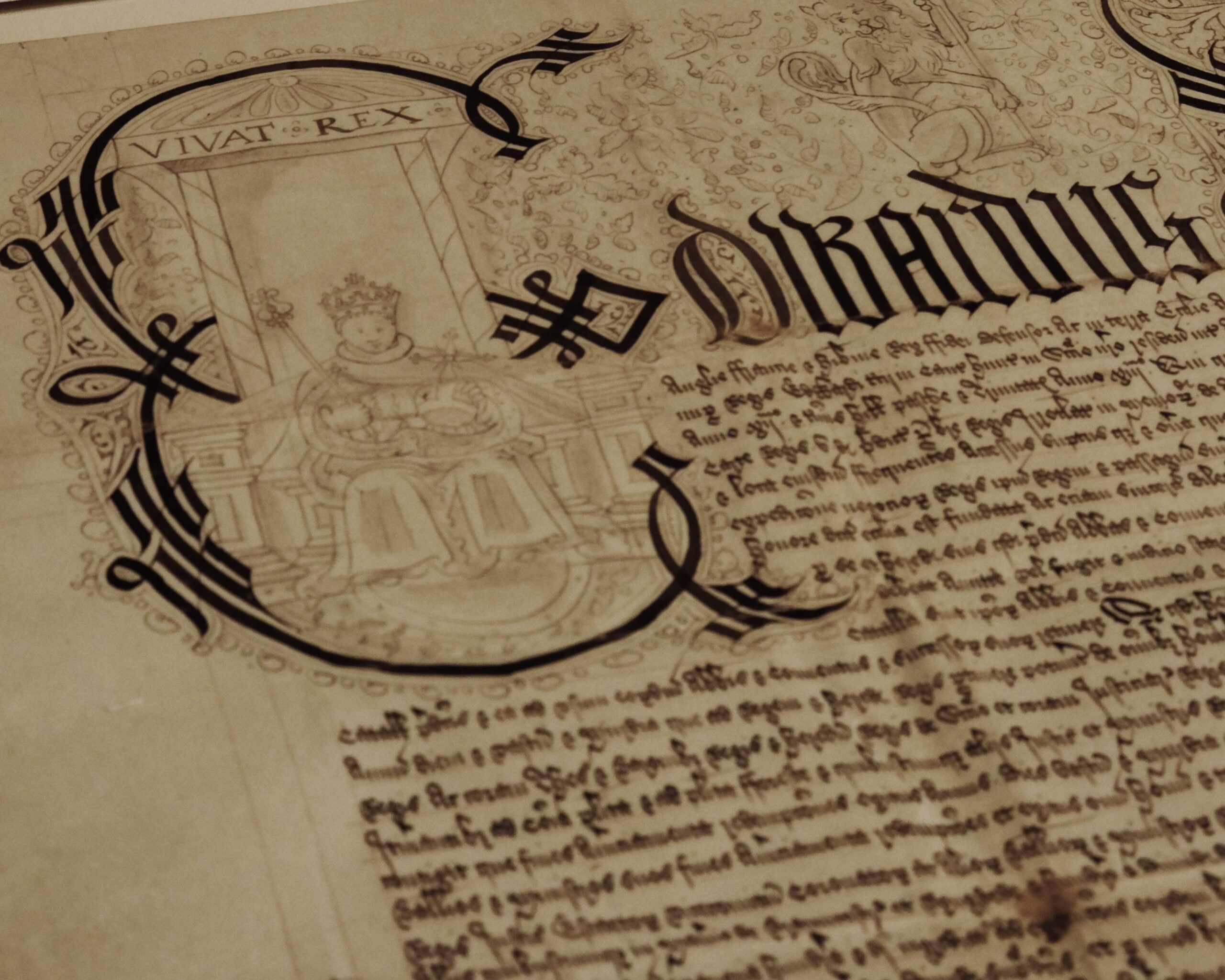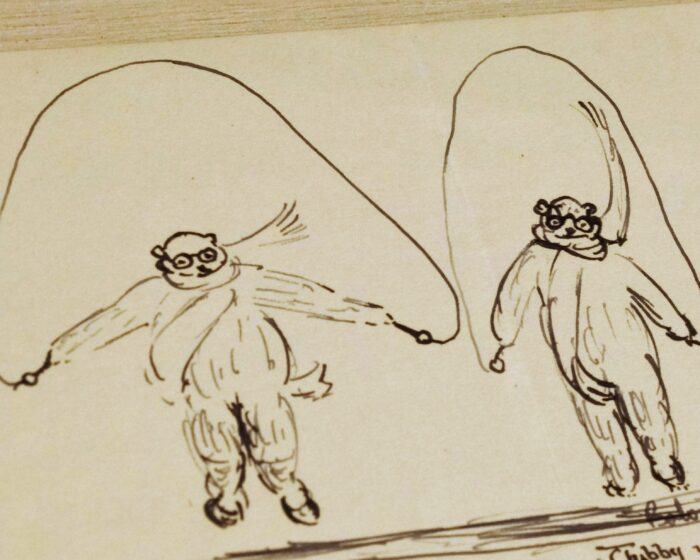Next were three royal charters, one from each of Henry VIII’s children. There was an inspeximus* from Edward VI from 1553, which has a very sweet looking illustration of him in the beginning initial and decoration along the top border. The document is dated June 21st 1553, just two weeks before his death on July 6th. There was also a charter from Philip and Mary from 1558. Philip and Mary are depicted as joint rulers both in the decorated initial and in the great seal at the bottom. This document was fortunately found in a crawl space when the Aula Bar was being constructed. The impressive inspeximus by Queen Elizabeth from 1559 is one of the most ornately decorated items in the archival collection. It is not only beautiful but also significant, as it reconfirms the College’s earliest charters. Many of the original charters have been lost over the years, so without this charter, the College would struggle to prove the legal basis for its existence.
The Grant of Arms, another very important legal document for the College, was also on display. It dates to 1575 and grants Trinity Hall the right to use the arms that are depicted in the document. The arms granted was based on the family arms of Bishop William Bateman, with some notable differences. The most significant being the addition of a helmet and wreath above the coat of arms with a red lion holding a book.
Moving into the 18th century, there was Spencer Penrice’s diary. Penrice was admitted to Trinity Hall in June 1736, and his diary meticulously records daily student life in hourly increments, providing a fascinating insight into the social, academic and religious life of a fellow commoner in the early eighteenth century.
Also from the 18th century were some key documents from the case against perfidious fellow, Philip Nichols. Philip Nichols was expelled from the fellowship in 1731 after being found guilty of stealing books from Trinity Hall, the University Library, St John’s, and Trinity College. The items on display were two affidavits from the case with the keys found in his rooms attached used as evidence against him, so they were quite literally key documents.
The famous Dickens letter, which recently celebrated it’s 155th birthday, was also out. Much has been said about the letter recently, but for more information see our Old Library blogpost.
From the 19th century there were a number of photos, including a photo of a young Edward Carpenter, the poet, pioneer of the socialist movement, and early activist for gay rights. His photo was part of a series of photos of fellows from the 1870’s alongside Edward Anthony Beck, who matriculated in 1867, was a fellow from 1871 to 1901, and Master of the College from 1902-1916. It was with Beck that Carpenter began exploring his feelings for men. According to Carpenter their friendship had a “touch of romance,” but Beck ended the relationship causing Carpenter great emotional heartache.
The other photos were of college buildings. There were photos showing what central site looked like in 1865 (spoiler alert, it looked exactly the same except everything was covered in ivy!), and photos of the master’s coach house and stables from 1889 shortly before it was torn down to make way for the Latham Building. A postcard from 1911 showed what the Latham Building looked like shortly after it was built, complete with a tennis court on Latham Lawn!

